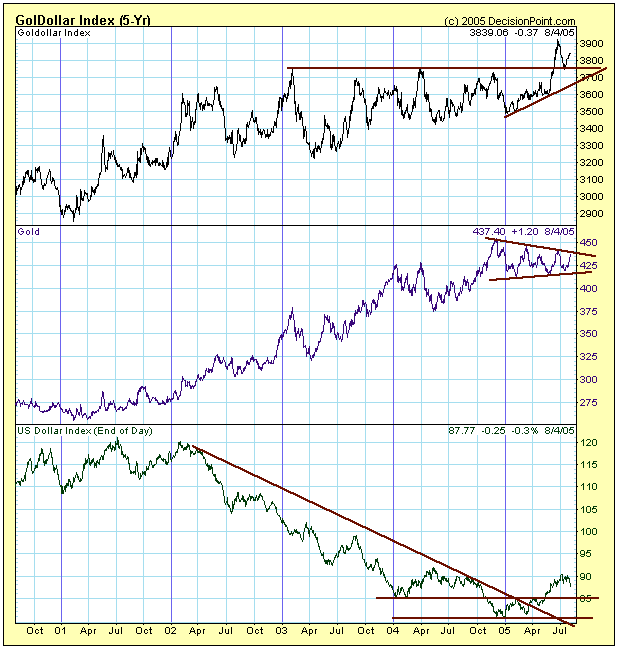Generally speaking, gold and the dollar have an inverse relationship -- a rising dollar causes the price of gold to decline and vice versa; however, supply and demand pressures also influence the price of gold, but it is often difficult to see them. For this we use the GolDollar Index.
The GolDollar Index was invented buy Tom McClellan (www.mcoscillator.com), and is calculated by multiplying the price of gold by the U.S. Dollar Index. (We divide the result by 10 to keep the numbers from getting too big.) Its purpose is to cancel the effects of currency fluctuations on the price of gold. By comparing it with the spot gold index we can determine if there is inherent strength/weakness in the price of gold.
The first panel on our chart shows that the GolDollar Index has been rallying since the beginning of the year and has exceeded its 2004 high. This means that the demand for gold has been strong enough to overcome the negative effects of the dollar's strength. This is also evident from the fact that, rather than declining, gold has been consolidating in a triangle formation, even though the dollar has been rallying.
Now the dollar has begun a correction (see bottom panel of chart), so it is likely that gold will be breaking out of the triangle and challenging the 2004 high around 450. Assuming that (1) gold's intrinsic strength persists, and (2) the dollar continues to correct to its support around 85, gold could rally above the 450 level by 10 or 20 dollars.
Unfortunately, such a move will likely prove to be a gold bull trap. The weight of the technical evidence indicates that the dollar has begin a long-term rising trend, which is long-term bearish for gold. But for now, the dollar is showing short-term weakness, and gold has intrinsic strength -- a combination that should make gold bugs very happy . . . for a while.







